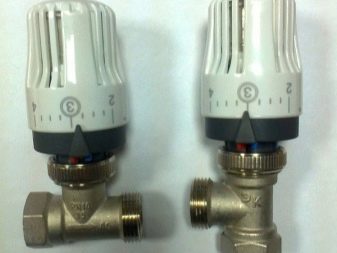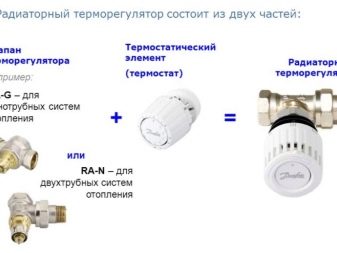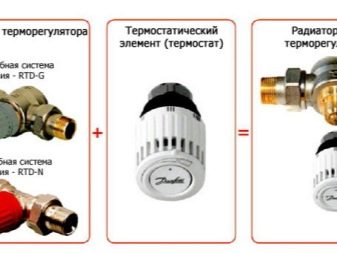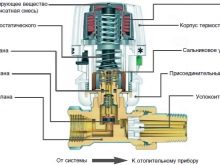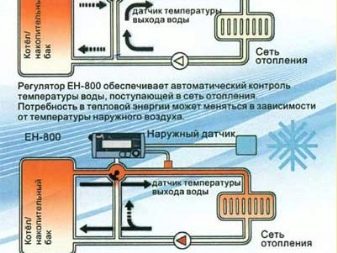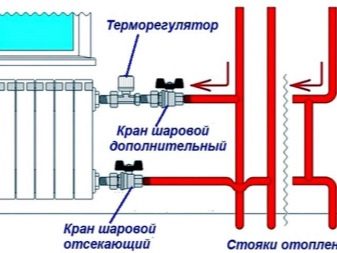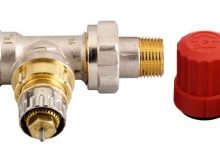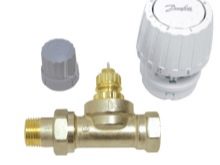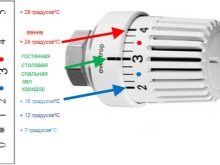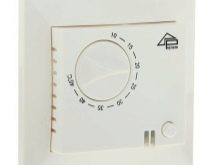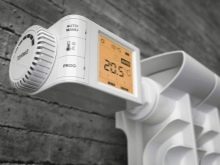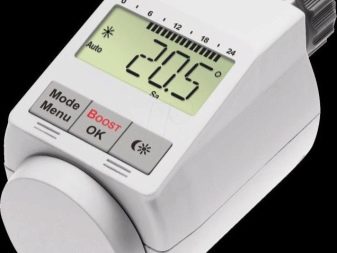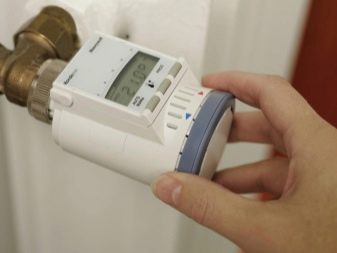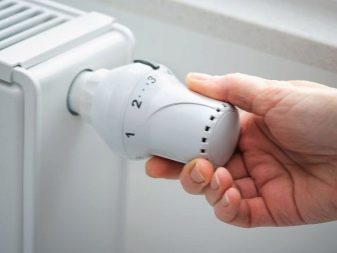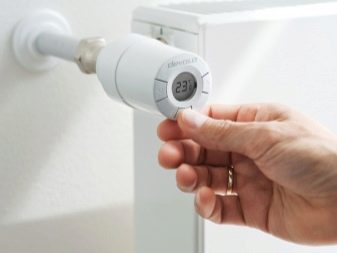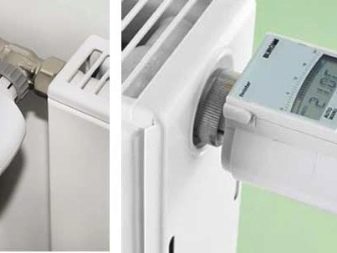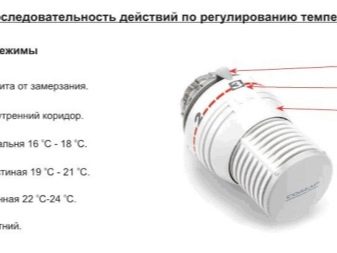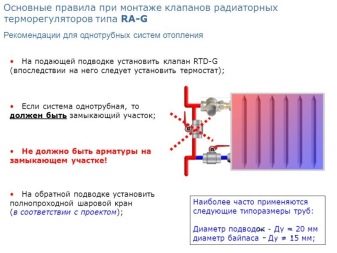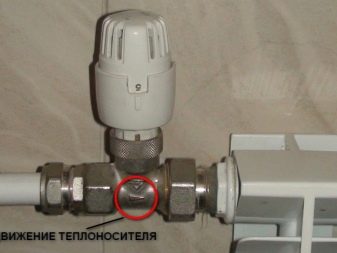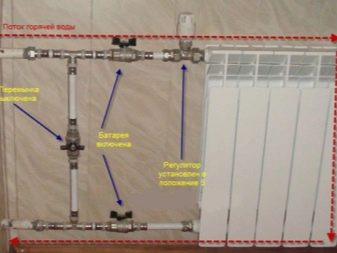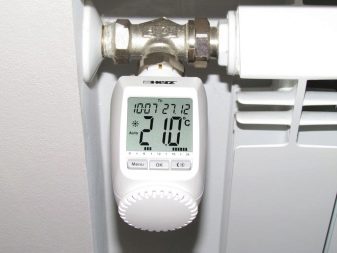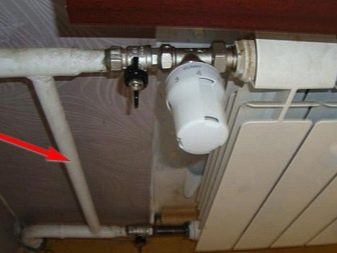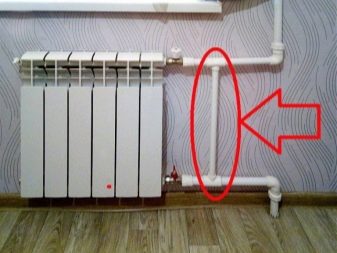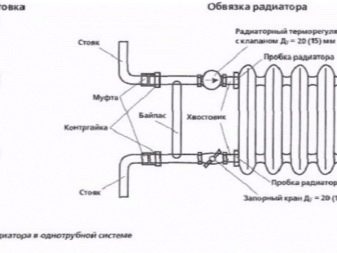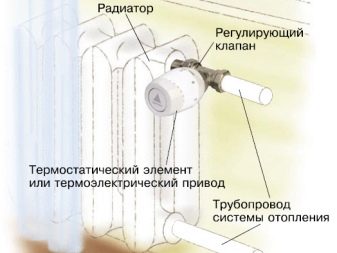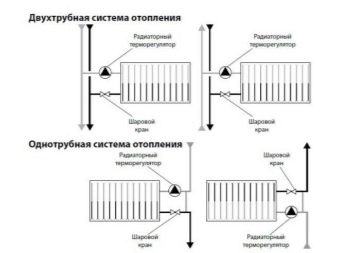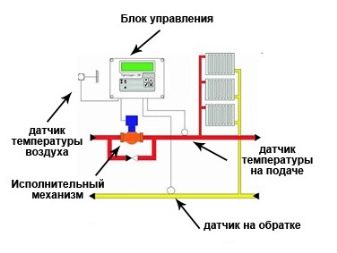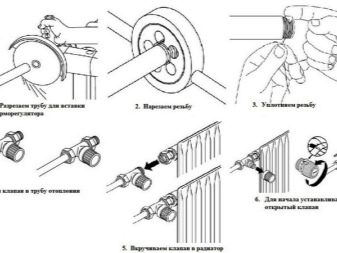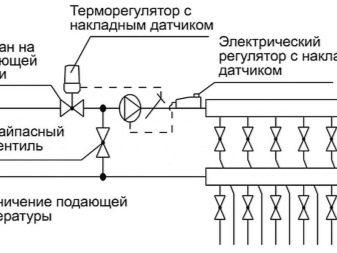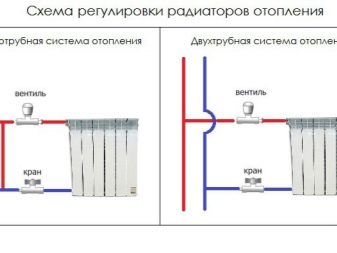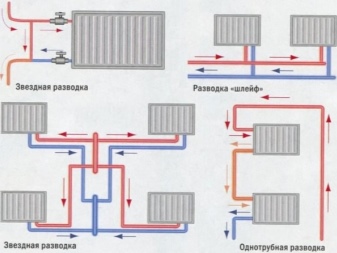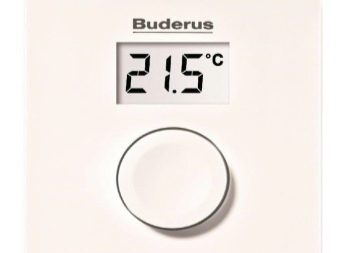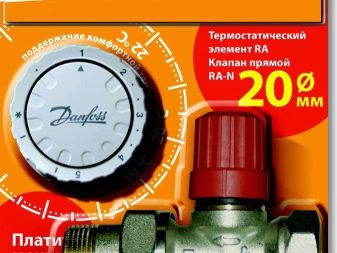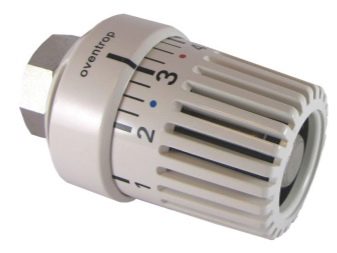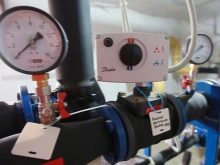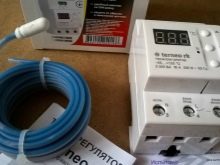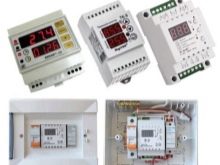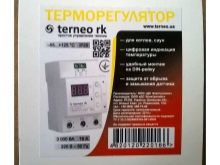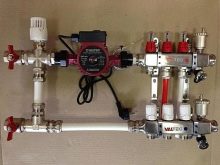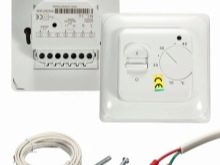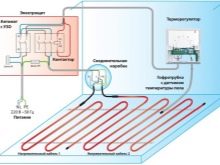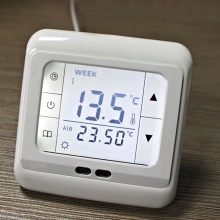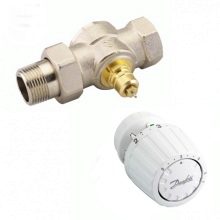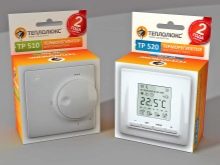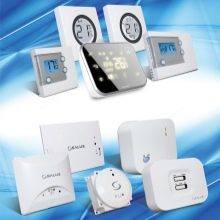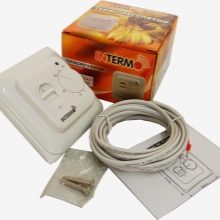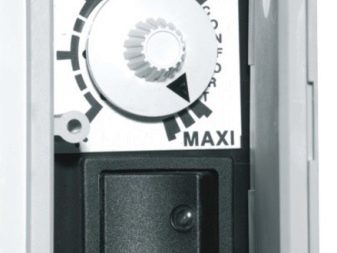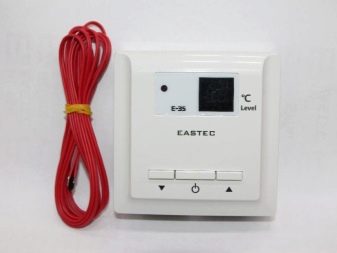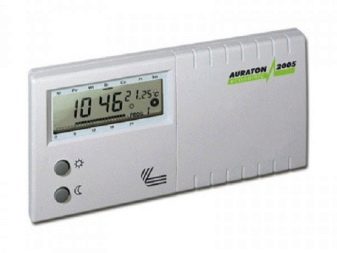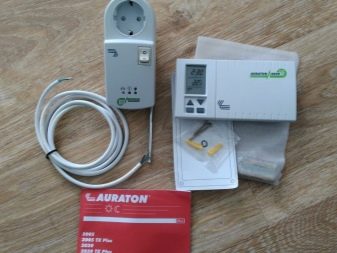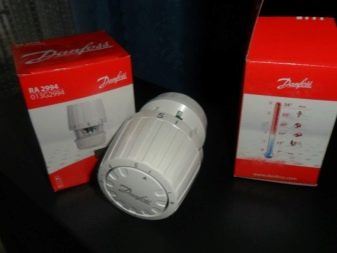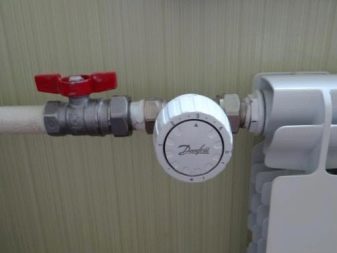Temperature controllers of the heating system: technical characteristics, types and methods of installation
Heating systems can be arbitrarily reliable and powerful, but at the same time the practicality of their use is small. The reason is the absence of a specialized control device. As a result, in the winter, either there is not enough heat, or a considerable part of the personal budget goes literally through the open windows (this is especially unpleasant in private homes).
Device and purpose
If a water temperature regulator is installed in the heating system, it adapts to the need that has been created for the speed of passage of the coolant to the radiator. By installing such a device together with a heat meter, you can save and reduce unproductive energy consumption. Depending on the needs and capabilities of the tenants worth buyingmodels with manual temperature programming for the day and night, or with pre-planned microclimate parameters for specific days. These functions can be combined with each other. Then it will be possible both to eliminate the extra warm-up during warm hours, and to quickly prepare for the approaching frosts or thaws.
The differences are expressed largely by the way the thermal sensor is implemented, what is its basic principle of operation. Some models measure the air temperature in the rooms, while others are guided by the heating of water in the pipeline. This does not affect the accuracy of measurement and adjustment to a real need. The main thing is to take into account all the nuances and subtleties. Too accurate equipment in most cases is not needed, since it only loads the personal budget.
Each room can be equipped with its own thermostat, it is even allowed to use devices of various brands and models. The signal to the control relay can come from a sensor that measures the temperature of the coolant in the radiators. But such a scheme is considered outdated and does not meet the latest technical requirements.The thermostat is incompatible in principle with batteries made of cast iron. Only if radiators of a more modern type are installed in the room, it is allowed to use it.
It is necessary to understand that thermostats are not some kind of "magic" means; with their help it is impossible to extract more energy from the heating system than it is able to supply. But to reduce heat consumption or increase it to the maximum as needed, they are quite capable. A typical design includes not only a valve and a unit that receives signals from the control panel. Thermal valve and thermal head are very important elements. Selection of parts is made according to the size of the pipeline and the type of heating system.
In addition to the already mentioned components, the composition of the thermostat may include:
- collapsible connection;
- spool;
- compensating unit;
- cap nut;
- fastening ring;
- scale, which adjusts the temperature.
Principle of operation
The thermostatic mechanical valve for the radiator begins to operate with a valve stem support. The rod opens the lumen of the pipeline.As soon as the temperature of the substance inside the bellows rises, it presses on the rod, systematically lowering it. Because the cross section in the passage of the channel is closed. Through the radiator passes less water or antifreeze, and the liquid that is inside, inevitably cools. Since the heat agent also loses heat, it enters the initial phase and pulls up the rod.
Since after raising the rod, the coolant flow again passes inside the radiator without obstacles, the cycle repeats. A gas heat agent is characterized by an increased rate of reaction to temperature, but the technological complexity of its use increases the cost of the mechanism. The liquid does not adapt so quickly to heating or cooling, but it does allow for a somewhat cheaper unit. However, the real difference in practical use is relatively small. After all, the regulators adjust the temperature with an accuracy of 1 degree.
Species
Thermostatic valve looks like a typical valve. Inside there is a saddle and a locking cone that opens or blocks the channel lumen. The difference is largely due to whether the system is mounted in a single-pipe or two-pipe circuit.Thus, the thermostat for one-pipe heating is characterized by low hydraulic resistance. Most often the difference is 2 times.
If the heating system works on the principle of natural circulation, it is often equipped with the same set of valves., as for monotube complexes. This will lead to an increase in hydraulic resistance, but still the technique will work stably. In the two-pipe version, only devices designed for increased resistance to fluid flow are regularly used. If you choose the wrong regulator, you will not be able to rationally warm the air in the room. Moreover, the selected system should be mounted with the most strict observance of the manufacturer's instructions.
Firms manufacturing valves actively use:
- bronze (overlapped on the outside with a layer of nickel and chromium);
- brass (it is covered only with nickel);
- stainless steel grades.
The advantage of these three metals is 100% corrosion resistance. Stainless valves better tolerate the hard parameters during operation. But the cost of their purchase will not please consumers.Because most people choose brass and bronze parts that will last almost as much as steel structures. Important: only the products of leading companies, which are purchased at official sales points, have the necessary characteristics.
According to the scheme of execution, it is customary to single out the straight and angular type of thermostatic valves.
Inside the thermostat is located one of three subspecies of the thermal head:
- manual;
- mechanical;
- electronic (automatic).
The range of tasks to be solved is the same in any case, but the practical action differs significantly. The manual device works by the same principle as the household crane. When turning the regulating device, the amount of the coolant passing through the apparatus changes. In most cases, the installation of the control system is carried out on both sides of the radiators, replacing ball valves. Simplicity and reliability of use together with low cost will suit everyone who is ready to regulate the flow independently.
A programmable thermostat may not be substantially different from a manual one., the only difference is that the adjustment to the sensations is made using an electronic control unit.The weather-dependent mechanism processes the signals from the temperature-measuring sensors, and accordingly changes its mode of operation. Often, these two categories of devices overlap. After all, it is necessary not only to adapt the action of the system to certain parameters, to external conditions, but also to set individually the appearance of this reaction. Without manual control, we note, can do and mechanical systems.
They always have a bellows, that is, an elastic cylinder that is filled with liquids or gases that are characterized by significant thermal expansion. Mechanics should be mounted towards the middle of the room. This increases the accuracy of the measurement. If the size of the head is too large, sometimes you have to use an external sensor. Such a regulator is connected not directly, but through small tubes, and provides the smallest error, but is more expensive than other options.
The electric controller is larger than all the others, and therefore the installation is most complicated. In addition to the installed measuring circuits, it is imperative to provide power supply.As a source of current, in order not to stretch the wires, most often use a pair of small-sized batteries. The microprocessor works very precisely and provides additional functions. Most often vary the level of recoil radiators according to the time of day.
Many automatic thermostats are equipped with a mixing unit, a pump, and so on. A useful option is sometimes the transfer of data over wireless channels. Returning to the way in which the sensor measures the temperature, it is worth noting that when it is measured in the coolant flow, despite the opinion that such devices are obsolete, it is useful for its cheapness. Therefore, such a scheme has a certain number of adherents.
The air meter is more effective than the water meter, it is placed not on the radiators, but inside the room. Weather automation is considered the most perfect and allows you to exclude unjustified temperature jerks in the event of a change in weather conditions. As a result, it is possible not only to provide comfort, but also to reduce fuel consumption. If a differential regulator is not needed, and there is a desire to get by with a cheaper combination of valve and throttle, installation is permissible on both input and output connections. All other moments are purely individual.
Choosing an electronic regulator, one should proceed from the fact that it can be placed anywhere, but only at a certain distance from heating appliances, pipes and radiators. Programmable controllers can be divided into two key types. In the case of the so-called closed logic, only individual parameters will be adjusted. Open logic is distinguished by enhanced capabilities when setting up and adapting to the prevailing conditions. Most people prefer a closed device, because it allows you to not worry about the tedious obscure settings.
Setup and operation
To use temperature sensors, you can, in principle, already with industrial settings. But they will almost certainly differ from the optimal parameters. The adjustment starts with the start of the heating system without a regulator and with the measurement of the temperature being created. This measurement is made strictly in the place that must be serviced first. For your information: when setting up, the doors and windows are thoroughly closed, without leaving even small crevices.
The head of the thermostat is set to a mode that provides a fully open gap. As soon as the temperature exceeds the desired value by 5 degrees, the regulator is switched to the closed position. Having found the temperature drop to the most acceptable level, you should smoothly open the regulating device. Then, noticing the noise and the beginning of the radiator warm-up, it is necessary to stop further manipulations and record the current position of the regulator. Subsequently, in order to live in comfort, it is necessary to indicate such a position of the regulator.
Of course, there will be no universal position. Additional settings are performed when the season changes or during a cold snap (thaw). If the device is set up manually, it is advisable to immediately mount it where access will be most convenient. However, for automated systems, the same rule applies in most cases. After all, access will need all the same for installation, initial configuration, maintenance, repair and subsequent dismantling.
Before setting it is recommended to turn off hoods and air conditioning equipment. If the controller is made on the basis of modern electronics, the setting is reduced to the choice of heating modes.In country houses and cottages, it is often the case that intensive warming up on weekends and the prevention of system freezing on weekdays are chosen. Of course, depending on individual needs, the situation may be completely different. The remaining nuances of the settings depend on the features of the equipment used.
Installation
Fixing the regulator on the battery can be made at different heights. For your information: this parameter is determined by the constructors and cannot be changed arbitrarily. It is usually assumed that the connection will occur to the upper collectors at a height of 0.6-0.8 m above the floor. But to put the thermostat in this way will not work if the connection of radiators occurred from below.
You can cope with this difficulty:
- adding a bottom tap containing a regulator;
- mounting the remote sensor;
- self-tuning thermostatic heads.
The configuration process is not very complex, all stages of it are outlined in the documentation provided. The inset is made through the threads available on the valves, using fittings or by cutting threads on the pipe.In any case, it is worth considering all the details before installing the device. The approach to work in an apartment building is significantly different. If heating occurs through a single pipe system, it will be correct to install a bypass.
The reason is that without the bypasses, the thermostat will change the heating throughout the entire riser. This is not only impractical, but may also result in a fine for violating the interests of other tenants. Contrary to popular belief, installing control equipment in bedrooms is impractical. It would be much more correct to put it in those rooms where the temperature difference develops or there are often people. First of all, it is a kitchen and a living area. And in the bedroom it is recommended to install a simple valve that dispenses the flow of heat.
In the two-story buildings the recommended location of the thermostat is on the second floor. It is there that warm air is directed, and the first floor always turns colder. Thermostats with sensors are mounted in those rooms where the movement of air flow is not difficult. The indicator is placed strictly horizontally, so that it shows a reliable picture.It should be taken into account during installation that thermostat valves on one side are equipped with an external thread, and on the other - oriented inward.
The machine is screwed into the radiator plugs with external sections of the required diameter (½ or 4 inches); if the heating system is not created from scratch, all water should be drained from it before the start of installation works. It is not allowed to place automatic thermostats behind drapery made of thick fabric or behind a decorative screen. If this is done, the system will measure the heat inside the cavity that has appeared, and not in the room itself. The solution to the problem is either the use of a remote sensor or the placement of a regulator on horizontal sections of the system, as close as possible to the entrance to the radiator. When the heating season ends, the thermostat is opened to avoid accumulation of sediment.
As soon as the inlet riser is blocked and water is drained, horizontal supply contours are cut off near the radiator. Cut parts and locking taps are disconnected from the batteries. The overall system, made by one-tube version, is additionally equipped with a jumper between the inlet and outlet circuits.On the valves of the regulators and the closing valves, the shanks with nuts are removed, then they are screwed into the radiator plugs. Next, going piping, which is required to put on a predetermined area. This piping is connected with the liner running horizontally; the bypasses are 1 inch smaller than the pipes that feed the water.
Only in the most extreme cases can a ball valve be attached. Such a device does not effectively regulate the temperature, because there are only two preset modes: open and closed, and if you try an intermediate position, the coolant will quickly damage the working part. The valves in the form of a cone are somewhat more efficient, since for them a partial opening is in the order of things. But periodically it is necessary to return the regulator to its original position. Therefore, we repeat once again, there are no special alternatives to full-fledged thermostats.
When designing a scheme for installing a thermostat with your own hands, you should focus not only on air circulation in a particular room.
Very important:
- thermal regime outside the walls of the building;
- the illumination of a certain place in direct sunlight;
- the presence of additional sources of cold or heating facilities in the room.
When mounting temperature controllers for underfloor heating, air temperature sensors or thermostats containing them are most often installed in places where a slight shadow is created. In these areas there should be no sources of heat, and still there should not be direct sunlight. The installation height is about 1.5 m. With an adequate selection of the type of apparatus, it is possible to save up to 70% of the energy consumed. In rooms of small size it is recommended to choose the most simple devices with little functionality; bathrooms and utility rooms should always be warm, because their visit is unpredictable.
It is undesirable to put thermal heads on each heating device. Only radiators whose total heat output exceeds 50% of the generation in a particular room are subject to adjustment. When there are two radiators, they put a thermostat on the one that is more powerful. In case of equality by this indicator, they are oriented towards the device closest to the heat source.
If you plan to use one device to control two or more rooms, it is better to turn to professionals.It is much easier to use two regulators for one channel in a common collective box or one thermostat with separate control loops. Occasionally the device is connected directly to the electrical panel. When the power of such a bundle exceeds 2000 W, you will have to install a separate circuit breaker. Therefore, in most cases, they simply use an outlet, paying attention to how many appliances receive current through it.
The standard installation height is 0.8-0.9 m. But when using air sensors, either separately or in conjunction with a floor temperature meter, they are guided by the instructions and do not violate the height guidelines given there. Floor indicators often put in 0.5-0.6 m from the wall, which comes thermal unit. It is recommended to place the sensor in assembly or corrugated tubes in order to guarantee protection from destructive effects and to simplify replacement in the future. When a film floor is placed, the meter is placed in a special depression in the floor, sufficient to make it flush with the rest of the surface.
The order is as follows:
- mounted switching box (except with the connection of overhead units);
- a wall is made in the wall and in the floor;
- power supply wires to the box;
- using a tester, check whether sufficient current flows to it;
- Pull the cable from the sensor inside the corrugated pipe and the grooves to the box;
- connect parts of the wiring according to the chosen scheme;
- put the thermostat in the designated place;
- attach its outer panel and cover.
It is advisable to install the valve on the hot water supply simultaneously with the connection of the radiator itself. If the system is already assembled, dismantling the liner is not enough. Especially great difficulties are created when steel pipes are used for the connection. There can not do without a tool that can cut the metal and form threads on it. Thermal head is placed without the use of tools.
All that is required is a combination of marks on the cases and a neat press. The head will be securely fixed in the socket. A positive result can be judged by clicking the latch. The anti-vandal-type temperature controllers are more difficult to mount, it will be necessary to take hex-shaped keys of 0.2 cm.Having achieved the coincidence of the marks, they press the thermal head and screw the side retaining bolt.
Remote sensors and regulators of the same type for the battery should be mounted on a wall that is freed from the entire disturbing area. Recommended height - 120-160 cm from the floor. Begin by attaching a mounting plate to the wall with dowels. Already on top of it with a slight pressure snap the case. To attach the capillary tubes need plastic clips (almost always they are included in the package).
Thermal heads provide adjustment of the regulators to the highest and lowest values. When these positions are reached, the impellers simply will not go further. The solution is very simple: the use of limiting pins on the back of the products. One of such pins is taken out. When the design is debugged, it is simply inserted into the hole under the desired label.
It is categorically unacceptable to use thermal regulators for a one-pipe system in the contours of two-pipe execution and vice versa. When the heating line is connected to the side of the radiator, a direct valve will have to be installed; lower occurrence meansthat it is necessary to mount the angular device. The arrow on the equipment indicates where the flow of coolant should be directed. If you comply with this parameter, you can connect to both input and output. When using the bottom connection, the thermal head adjusts to a slightly lower than usual temperature.
The set temperature depends on the characteristics of the room and its operation:
- +7 degrees - prevention of freezing;
- +11 degrees - the corridor;
- +16 degrees - bedroom;
- +20 degrees - the largest room in the house or hall;
- +24 degrees - sanitary unit;
- +28 degrees - the most intense mode; there is not all regulators, sometimes there is a limit of 26 degrees.
Criterias of choice
Reliable thermostat able to work for a very long time. But in order to always be warm and cozy in the apartment, it is necessary to abandon significant savings. This is exactly the case when saving money at first leads to the opposite result. Preference should be given to the products of concerns Overtrop (Germany) and Danfoss (Denmark). Both manufacturers produce goods suitable for a variety of interiors.
Devices with remote sensor, as already mentioned, measure the temperature as quickly and accurately as possible. If this is not particularly necessary, you can safely save. Especially in the case when it is not possible to fix the mechanism on the wall. Service split systems best provide embedded controls. In a separate category are temperature controllers serving warm floors.
When it is planned to use infrared equipment for heating, outlet thermostats are the best choice. The crucial point is the choice between mechanical and electronic versions. The second type is more expensive and more complicated, it depends on electricity, but it opens up more possibilities. In addition, electronic technology is easier to install and allows you to set a larger temperature range. If you have at least a little experience and special details, you can even assemble the regulator yourself.
If you already know the brand of the boiler that will be used for heating, then the thermostat and temperature sensor should be chosen in the model range of the same manufacturer. To rely on compatibility,even if it seems to be confirmed by supporting documentation - not the most reliable way. Particularly noteworthy is the selection of a general-purpose thermostat. As practice shows, in apartment buildings the total consumption of thermal resources and the provision of comfort directly depend on this device. Given the increased complexity of the central heating circuit and the wiring from it to the entrances, you should consult with experts before making a choice.
The radiator and thermostat mounted on the apartment riser should not be used to completely disconnect the apartment from heat. This will immediately lead to an increase in the general household consumption of heat energy, that is, it will create inconvenience for other consumers and will unreasonably increase the payment for utilities. The regulator for heating systems that receive heat from a gas boiler is equipped with a drive and a liquid element. Only at the initiative of the consumers themselves does this type of working fluid change to a gas or to an elastic variety.
The choice of a thermostat for an electric boiler also has its subtleties. Of course, modern varieties of such equipment are equipped with a practical control unit, which completely takes on the arising problems.But in many places the old equipment is still used, which regulates the work much worse. The range in which the temperature is controlled is entirely determined by the specifics of the heating system. More precisely, the smallest and largest values of the temperature of the coolant at which the pipes operate stably, have radiators and the boiler itself.
A wired plug-in unit is considered a better option than a wireless one, due to its low cost and increased reliability. But in specific rooms it makes sense to install wireless devices. Of course, only where specific temperature adjustment is generally needed. Devices with remote sensors need to buy if the heating battery will fall under a wide sill. They are also recommended for the case when the internal thermal element is under the action of a draft that cannot be removed. Particularly noteworthy is the selection of thermostat for underfloor heating. At the disposal of consumers there is a huge range - almost all possible colors and geometric shapes have already been implemented by manufacturers.
Thermostats that meet established standards are suitable for all floors:
- film;
- waterborne;
- traditional electric mats or spirals.
There is no need to purchase exactly the model of the same manufacturer, under the brand of which the heating circuit is released. It is very important to buy an additional damping tape. It extinguishes the size changes that occur under the action of heat. When choosing a thermostat for underfloor heating, we must not forget that digital technology may differ significantly. So, in some devices there are only a few control buttons, and in others there are a number of possibilities for flexible control.
The simplest options are attractive with increased reliability and low price. But they do not allow to find out what the actual temperature of the floor at a particular moment. Every time checking it by touch is not very practical and convenient. That is why it is better to buy products equipped with a display with warming indication. In some situations, a thermostat equipped with two types of sensors turns out to be more economical.
It monitors the warming up of not only water, but also air, and blocks the warm-up, as soon as the readings of any of this pair of instruments reach the specified value.For radiator systems, this is not very reasonable, but in the case of a heated floor, with its increased thermal inertia, it is the other way around. Infrared sensors do not just correspond to the spirit of modern progress, they can be fixed quite far from the thermostat, but at the same time help to tune the work of all systems. It is these controls that are best in rooms and technical rooms where significant air humidity is likely. Due to the saturation of the market of thermal regulators, you need to consult with the sellers every time and take into account your material capabilities.
You should not be too happy if the regulator comes with a warm floor. In order to save, manufacturers supply thus not the most advanced mechanisms with limited functionality. Only for small spaces are they acceptable. In all other cases, you have to think thoroughly. It is recommended that the power exceeds the maximum planned load on the warm floor by 15%, then the regulatory system will last for a long time.
The laid-on thermostat can coordinate the work of a warm floor in the house with any wall material.Be sure to have to mount a special box under it. Embedded devices require the formation of grooves that help hide the wires. You will also have to drill a channel designed to secure the instrument box. From the built-in regulator will not be confused in a wooden house.
There are more options connected to the DIN rail. Such thermostats must be placed in panels of distribution boards. The appearance and color of the regulators for floor heating, as well as for ordinary boilers, are extremely varied. Here it is necessary to be guided only by personal taste and recommendations of designers for a specific interior. Devices equipped with a display are divided into two subgroups: with built-in and with dismountable control unit.
The second type is distinguished by the fact that after the separation of the control structure from the thermal head, it remains operable in the typical mode. It is these devices that allow you to adjust the temperature according to the time of day, using pre-installed or specially specified programs. The ease of reducing the intensity of heating in moments when there is no one in the house is a very positive trait.Anti-vandal thermostats are recommended to be installed in homes where there are small children. Such a technique, protected not only from interference with the design, but also from accidental distortion of the parameters, is also useful in public places and public institutions.
Having dealt with the basic requirements for the thermostat, you can find out which models are suitable for solving a particular problem. The Terneo Auraton PT32 GST model is recommended for updating the old heating infrastructure.
In their reviews, consumers note that this device increases the efficiency of boilers and makes them more comfortable to use. The manufacturer has equipped its device with a digital temperature sensor. The engineers managed to make the task of the required mode extremely simple. Such a mechanism is best combined with electric boilers equipped with a bimetallic relay. Speaking about PT GST, it is worth noting that this device is compatible with any boilers requiring the use of dry switching contacts; The device has a GSM block and is controlled by text messages.
Auraton 2005 is approved by specialists for reducing the consumption of electrical current in the system. Connect the device can be wired or at a distance. Automation allows you to set the exact modes of operation for 7 days in advance. Eliminate the error helps a comfortable control panel with LCD screen. In addition to 6 pre-installed programs, there are 3 more user-defined. So this model can really be considered a worthy choice.
A good proposal can be considered a model of the thermostat “Danfoss RA 2994”Fits perfectly with the RA-G valve from the same manufacturer. This combination allows you to maintain one-pipe heating systems, designed for diameters from 15 to 25 mm. Danish-made thermostats are familiar to domestic specialists since the 1970s. And all this time they showed themselves exclusively from the positive side. The designs of the Scandinavian company are compatible with any heating boilers, regardless of the type of fuel and power used in them.
It should be remembered that after installing the thermostat on the radiator, it will not warm up completely. To ensure a uniform flow of heat to all parts of the surface, it is necessary to remove the thermal head.But the choice of Russian or foreign devices largely affects the price. The difference can be 2-3 times with similar characteristics.
A comparative analysis of thermostats is waiting for you in the next video.


